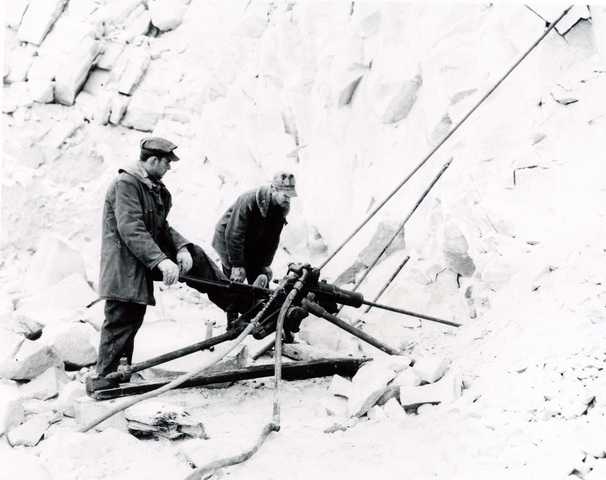Akro Agate Company was started by Dr. George T. Rankin, Gilbert C. Marsh and Horace C. Hill. The story of the beginnings of the Akro company are told in the words of Gilbert Marsh below, as appeared in the Akron Beacon Journal.
The "Akro Agate Company was started by Dr. George T. Rankin, Gilbert C. Marsh,
(President of "Wagner-Marsh Shoe Store"), and Horace C. Hill, (Former employee
of "Navarre Marbles"). Marsh and Rankin supplied the capital and Hill the
expertise. After a couple of years showing success, they decided to purchase a
larger building and expand their operation, In late 1914 the company moved to
Clarksburg, WV. The Clarksburg site was chosen for several reasons. Most
important was the abundance and availability of natural gas and sand. Both are
very important in the glass making industry. At this early stage, Marsh, Rankin,
and Hill, weren't able to build a plant, but they found an existing plant that
was vacated. The building formerly housed the "National Aluminum Company". It
was an ideal site, since it was located beside railroad tracks, with a side rail
to the building for loading. At this time they rented the building and began
operation. "Akro Agate" first appeared in the"Clarksburg City Directory" in
1915, as manufactures of toy marbles, caster balls, and glass balls for
lithographers use.
 |
| Akro Agate Logo |
In my research of Akro, I have found the amount of information available to be greater than my research into Hazel-Atlas. I surmise the reason as that Akro was owned and operated by the same corporation for its more than forty years of existence. Hazel-Atlas, by comparison, was the second incarnation at its location and was later bought by Continental Can. Company records for the previous manufacturers were not well preserved by the new owners and as such, much of its history was lost.
The primary product Akro produced through 1930 were glass marbles. Because of competition and two major patent lawsuits that Akro lost, it began to diversify in the early 1930's. They began to make ashtrays and small containers. They further diversified in 1936 when the Westite plant in Weston, West Virginia, was destroyed by fire. They bought their molds and introduced lines of flower pots, planters, and vases. Toward the end of the 1930's they introduced a line of children's dishes with little success.
Akro found greater success with its line of powder jars in the early 1940's. Their Scotty Dog and Colonial Lady were hugely popular and were their most successful line. World War II proved to be a boon for Akro as cheaper Japanese imports were cut off. This led to a greater success of its children's dish line.
 |
| Scotty Dog |
 |
| Colonial Lady |
The end of Akro came as the war ended and plastic and metal toys became cheaper to manufacture than glass. As sales continued to plunge over the next three years, Akro decided to cease production. On April 24, 1951, Akro Agates closed its doors for good.
 |
Akro sold their marbles in both the Sears Spring & Summer Catalogue and the
Fall & Winter Catalogue from 1922 until 1935. |
Questions for consideration:
1. Why did Akro choose to move to Clarksburg?
2. Sears sold Akro marbles through its catalogue for over 13 years. How were catalogue's used differently then than they are now?
3. Why do you believe Akro's line of children's dishes would be a poor seller in the 1930's?
4. Why did the children's dishes become more popular during and after World War II?
5. What eventually spelled the demise of Akro?


 FIG. 1: To start a game of Ringer the children lag from a line, drawn tangent to the ring, to a parallel line across the ring, which would be 10 feet away. The child whose shooter comes nearest the line has the first shot. Players must lag before each game. Practice lagging, as the first shot may mean the winning of the game before your opponent gets a shot. In lagging, a child may toss his or her shooter to the other line, or he or she may knuckle down and shoot it.
FIG. 1: To start a game of Ringer the children lag from a line, drawn tangent to the ring, to a parallel line across the ring, which would be 10 feet away. The child whose shooter comes nearest the line has the first shot. Players must lag before each game. Practice lagging, as the first shot may mean the winning of the game before your opponent gets a shot. In lagging, a child may toss his or her shooter to the other line, or he or she may knuckle down and shoot it.



















